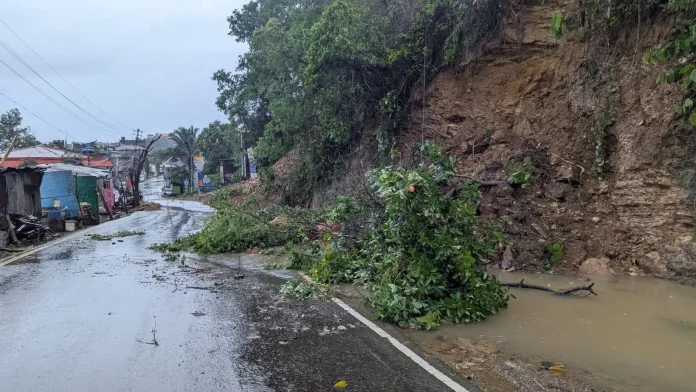AIZAWL, June 6: Mizoram is facing a severe monsoon crisis, with torrential rains triggering widespread landslides, flash floods, and infrastructure damage across the state. As of 12:30 PM on Thursday, the State Emergency Operation Centre reported 769 landslide-related incidents and damage to 272 buildings, highlighting the scale of the unfolding disaster.
A total of 452 families have been evacuated from high-risk zones. Among them, 338 families were displaced after their homes became uninhabitable due to landslides, mudslides, and rockfalls. An additional 114 families were relocated from flood-affected low-lying areas, especially those situated along the Tlawng and Khawthlangtuipui rivers. While some flood-affected residents have returned home as water levels receded, many remain sheltered in relief camps and safer locations.
Despite a brief respite from rainfall since Tuesday afternoon, Mizoram continues to grapple with major disruptions in power and water supply. Large parts of the state remain without electricity. According to the State Power and Electricity Department, power has been almost fully restored in Aizawl city, but rural areas are still facing outages. Field workers are continuing round-the-clock efforts to restore power to affected regions.
Water supply has also been severely impacted. In Aizawl and several other towns, high turbidity in rivers and physical damage to water infrastructure have caused major disruptions. The Public Health Engineering (PHE) Department reported submersion of four pump sets, damage to five water intakes and 14 pipelines, along with seven gravity pipelines and six distribution lines. Officials warned that the restoration of normal water supply may take considerable time.
Transportation and road connectivity have been hit hard. Landslides and mudslides have blocked roads at 319 locations, while the collapse of 61 retaining walls and the appearance of 10 sinking zones have further hampered access. Rockfalls were recorded at 11 sites, alongside uprooted trees at eight locations and damaged electric poles at 10 sites.
In response, State Disaster Management Minister Prof Lalnilawma announced the formation of a Post Disaster Management Team (PDMT) to conduct a detailed assessment of the destruction and determine the financial cost of recovery. “Once the PDMT submits its findings, the State Government will further evaluate the damage and approach the Centre for financial assistance,” he stated.
The State Government has already allocated ₹57 crore under the State Disaster Risk Management Fund (SDRMF) for the 2025–2026 fiscal year. Of this, ₹45.60 crore (80%) is designated for the State Disaster Response Fund, while ₹11.40 crore (20%) is reserved for the State Disaster Mitigation Fund. The funding is provided under a 90:10 cost-sharing ratio between the Centre and the State.

